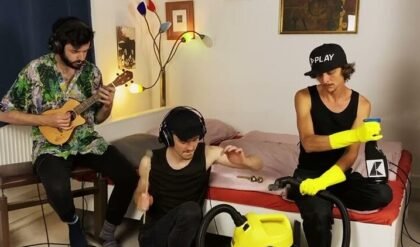In a serendipitous turn of events, Dr. Ross Hatton, a distinguished Professor of Mechanical Engineering and Robotics at Oregon State University (OSU), found himself collaborating with biologists from the University of California, Berkeley, who specialize in studying the intricate world of spiders.
Their objective? To construct a large-scale model and robot spider that would unravel the enigma behind the mechanisms employed by these arachnids to detect activity on their webs through vibrations.
However, the story doesn’t end there. As fate would have it, Dr. Chet Udell, an Assistant Professor of Biological and Ecological Engineering, electronic instrument builder, and talented musician, came across a fascinating radio segment about the robot spider on NPR. Intrigued by the potential implications of such a creation, he couldn’t resist delving deeper into the subject matter.
Coincidentally, Dr. Udell and Dr. Hatton crossed paths at a captivating research mixer event. The spark of creativity ignited when they found themselves engaged in a lively conversation about their respective fields of expertise.
It was during this exchange that the idea to transform the robot spider’s web into a highly expressive musical instrument took hold, marking the birth of a unique and formal collaboration.
With their diverse backgrounds and unwavering enthusiasm, Hatton and Udell embarked on an ambitious endeavor. Their mission was to push the boundaries of scientific exploration and artistic expression simultaneously. By combining their knowledge of engineering, biology, and music, they sought to create a truly remarkable fusion of disciplines.
As they delved into their work, the scientists were astounded by the intricate web-like structure of the robot spider. Its delicate threads, meticulously woven, were a testament to the artistry found in nature. They marveled at the intricate patterns and the spider’s unparalleled ability to detect even the slightest vibrations coursing through its web.
The duo soon realized that the web, with its extraordinary sensitivity to vibrations, possessed the potential to be transformed into an instrument capable of producing a symphony of sounds.
Inspired by the spider’s unique nature-inspired mechanism, they set out to create a musical masterpiece that bridged the gap between science and art. Using their expertise in robotics and electronic instrument building, Hatton and Udell carefully reimagined the robot spider’s web.
They meticulously crafted each silk strand, integrating cutting-edge sensors to capture the nuanced vibrations that danced across the web’s surface. The vibrations, once translated into musical notes, would create a harmonious melody, a captivating symphony born from the interaction between the spider’s web and the world around it.
In their pursuit of perfection, the duo tirelessly experimented with different materials and designs. They sought to strike the delicate balance between preserving the web’s natural properties and enhancing its musical potential.
Countless hours were spent refining the intricate details, ensuring that every thread resonated with the melodies they envisioned. Finally, after months of dedication and tireless innovation, the transformation was complete.
The robot spider’s web had evolved into a breathtaking musical instrument, capable of conveying the subtleties of the natural world in a symphony of sound. The vibrations, once merely signals of the spider’s prey, had now become the building blocks of a mesmerizing musical composition.
The world stood in awe as Hatton and Udell unveiled their creation to the public. Audiences were captivated by the fusion of science and art, marveling at the intricate web stretched across the stage, shimmering under the glow of carefully orchestrated lights.
As the musicians delicately plucked the web’s strands, the audience was transported into a realm where technology and nature intertwined, creating an ethereal experience unlike any other. The collaboration between Dr. Ross Hatton and Dr. Chet Udell had not only shed light on the mysteries of spider web vibrations but had also given birth to a new form of artistic expression.
As the applause thundered through the concert hall, it became evident that science and creativity could blend harmoniously, pushing the boundaries of human ingenuity and imagination.





